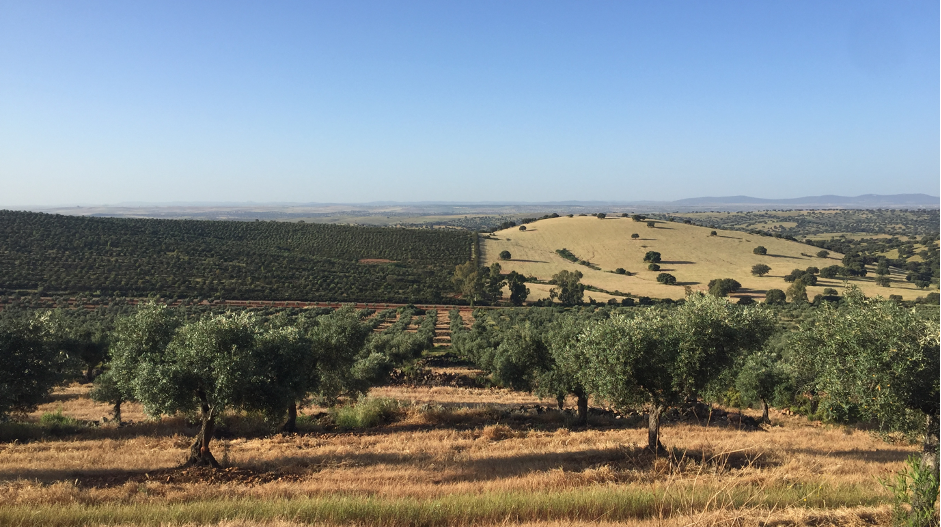Rather than trying to plant as many trees as possible, research coming out of the LANDMARC project suggests that it might be better to focus on planting fewer trees and managing them well, in a way that’s good for the underlying soil.

These days there is a lot of emphasis placed on the need to plant more trees for carbon offsetting. But it’s important to understand that planting trees isn’t by itself a viable long-term decarbonization strategy. If we want to create a carbon pool that can keep CO2 out the atmosphere in the long run, planting more and more trees isn’t necessarily the right approach. Rather than trying to plant as many trees as possible, it’s better to focus on planting fewer trees and managing them well, in a way that’s good for the underlying soil, and that’s suited to the local conditions. Here’s why.
A new rationale for an old practice
It’s easy to think about creating new forests on empty land – a practice known as afforestation – as something we started doing only recently, as we became more concerned about the impact of climate change. But, in fact, afforestation isn’t a new phenomenon, and we’ve practiced it for many different reasons over the years. In Spain, for example, more than six million new hectares of abandoned land were converted into forests in the last 80 years. As much as 60% of Spain’s current tree cover was afforested between 1940 and 1984, long before carbon capture was the buzzword it is now. This was mainly thought of as a way to counter-act erosion, offset rural exodus, and boost timber production after the second world war.
How trees store carbon
So while afforestation itself is nothing new, what is new is doing it primarily for the purpose of carbon sequestration.
Here’s roughly how that works: As it grows, a tree converts atmospheric carbon into organic carbon, and accumulates that organic carbon into its biomass. This happens more rapidly while trees are younger and growing faster, and it slows as they mature.
This makes forests a pretty good carbon pool in the short term. But what happens when we cut those forests down to harvest their timber? Or if they burn in a major wildfire? When this happens, much of carbon that was stored in the forest may be released back into the atmosphere.
As a result, trees themselves are highly vulnerable to both catastrophic disturbances and human exploitation, and – by themselves – do not always represent a long-term carbon storage solution, especially in regions where the risk of forest fires is high.
Getting more carbon into the soil
This raises the question: why, in that case, is planting trees sold as a long-term strategy to mitigate climate change? Part of the answer to this is because not all the carbon that a tree absorbs is accumulated into its biomass. A fraction of this carbon also ends up in the underlying soil, through litter decomposition and a process called rhizodeposition. (Rhizodeposition means the release of carbon compounds from plants through their roots.) As a result, planting trees has the potential to increase the soil organic carbon (SOC) pool, which is less prone to disturbances. This makes soil a less vulnerable carbon pool than trees.
So the carbon component of soil -- the SOC -- is a pretty important metric when it comes to carbon sequestration. But how exactly does afforestation affect the amount of carbon in the soil? What is exactly the amount, rate and direction of change in SOC it causes? These were some of the questions we set out to answer in our work for LANDMARC.
What our LANDMARC study focused on
LANDMARC is EU-funded interdisciplinary research project that is mapping how much carbon could be captured by using land differently, in ways that work for businesses, people and the planet.
One of the things LANDMARC is particularly interested in is how to plant and manage forests to maximise their carbon sequestration potential.
One of our studies focussed on Extremadura in Spain, home of the largest afforested area of land in Europe. We collected soil samples in former croplands that, in the last 25 years, had been afforested with endemic oak species. Analysis of these samples yielded some surprising results.
25 years just to get back to pre-afforestation levels
We observed that, up until now, we could not detect a net carbon sequestration in the plots of land we studied, when assessing both soil and biomass carbon. Part of the reason seems to be that our soil analysis indicated an initial decrease in SOC, followed by a gradual return to the area’s previous SOC levels, levels which have only been surpassed by the soil under the very oldest trees in the study site, and only when certain soil depths are considered. (Figure 1). Given the initial loss of carbon, this suggests that this particular afforestation effort, which has been going on for 25 years, has yet to have a net positive impact when it comes to SOC.

Remembering the soil underneath the trees
However, our work also suggests that this area’s carbon sequestration potential could be greatly enhanced if forest managers stopped focusing only on plant growth, and also prioritized SOC recovery. In our study, SOC in the top 30 cm of soil stored roughly the same amounts of carbon as the trees did. SOC levels would likely increase faster if soils were less exposed to disturbance, which are mainly caused by soil tillage practices carried out on our study site in Mariblanca, to suppress competition for the trees. Tillage tends to disrupt soil macro-aggregates, which results in a decline of the physical protection of SOC, and leads to extensive SOC losses. It would thus be a good idea to manage tree competition in a way that does not disturb SOC formation. This could be done by, say, surface mulching of competing species and shrubs instead of tillage.
Conclusion
Taken together, this suggests that the afforestation of cropland in semi-arid ecosystems is a decarbonization strategy which takes time to be effective, making it very much a long-term project. It also shows that paying attention to soil management and soil health – rather than focusing just on plant growth – potentially increases its effectiveness.
These results were generated with the assistance of EU financial support.
LANDMARC
LANDMARC project
Negative emission solutions are expected to play a pivotal role in future climate actions and net zero emissions policy scenarios. To date most climate actions have focussed on phasing out fossil fuels and reducing greenhouse gas emissions in, for example, industry, electricity, and transport. While zero emission trajectories in these sectors will remain a priority for decades to come, it is expected that residual GHG emissions will remain. To be able to fulfil the Paris Agreement and meet the world’s climate goals research, policy and markets are increasingly looking at negative emission solutions.
This is why the nineteen LANDMARC consortium partners work together in order to: • Estimate the climate impact of land-based negative emission solutions, in agriculture, forestry, and other land-use sectors • Assess the potential for regional and global upscaling of negative emission solutions • Map their potential environmental, economic, and social co-benefits and trade-offs LANDMARC is an interdisciplinary consortium with expertise from ecology, engineering, climate sciences, global carbon cycle, soil sciences, satellite earth observation sciences, agronomy, economics, social sciences, and business. There is a balanced representation of partners from academia, SMEs, and NGOs from the EU, Africa, Asia and the Americas, which ensures a wide coverage of LMTs operating in different contexts (e.g. climates, land-use practices, socio-economic etc.) and spatial scales.Project details
- Project title: “LAND-use based MitigAtion for Resilient Climate pathways”
- Funding scheme: European Union Horizon 2020 Programme (EU H2020, Grant agreement ID: 869367)
- Duration: 4 years (1 July 2020 – 30 June 2024)
- Project coordinator: Technische Universiteit Delft, Dr. Jenny Lieu
- Project website: www.landmarc2020.eu

